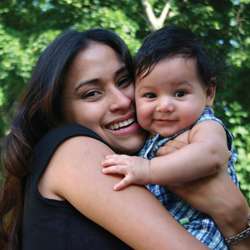Listen to the teleconference: Toxic Chemicals and Reproductive Health: What’s the Relationship?
 Infertility. Early puberty. Decreased sperm counts. Breast and prostate cancers. These are just a few of the reproductive health problems that are increasing in the United States today. More and more evidence implicates that some of these increases are linked to our constant exposure to toxic chemicals, from the air we breathe, to the water we drink, to the everyday products we bring into our homes. But what exactly is the connection?
Infertility. Early puberty. Decreased sperm counts. Breast and prostate cancers. These are just a few of the reproductive health problems that are increasing in the United States today. More and more evidence implicates that some of these increases are linked to our constant exposure to toxic chemicals, from the air we breathe, to the water we drink, to the everyday products we bring into our homes. But what exactly is the connection?
Scientists on the cutting edge of research have found that chemicals such as phthalates, bisphenol A (BPA), perfluorinated compounds, and cadmium are linked to the increase in reproductive health problems. According to the Centers for Disease Control and Prevention, we all have some levels of these chemicals in our bodies. No matter how hard we try to avoid them, potentially harmful exposures will remain unless we change federal policy to require safer chemical production.
- Read the Toxic Chemicals and Reproductive Health Factsheet.
- Read Tracey Woodruff’s testimony to the U.S. Senate Committee on Environment and Public Works “Current Science on Public Exposure to Toxic Chemicals” (PDF) (February 4, 2010).
- Read Tracey Woodruff’s Response to Senators Inhofe and Vitter’s questions (PDF) following Tracey Woodruff’s Testimony on February 4, 2010.



